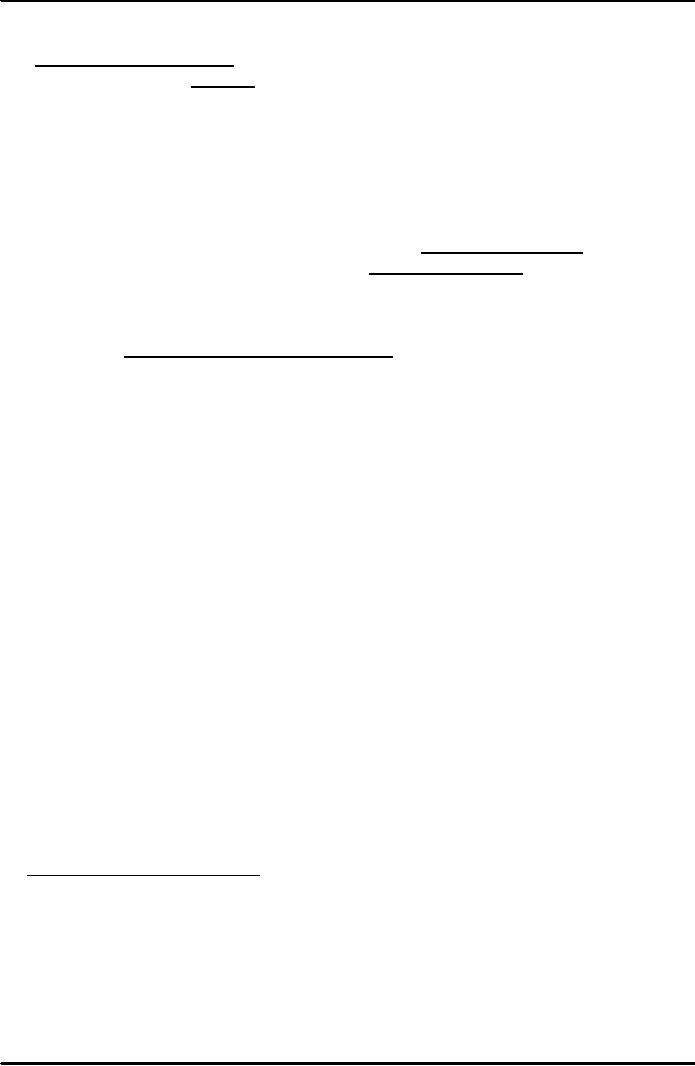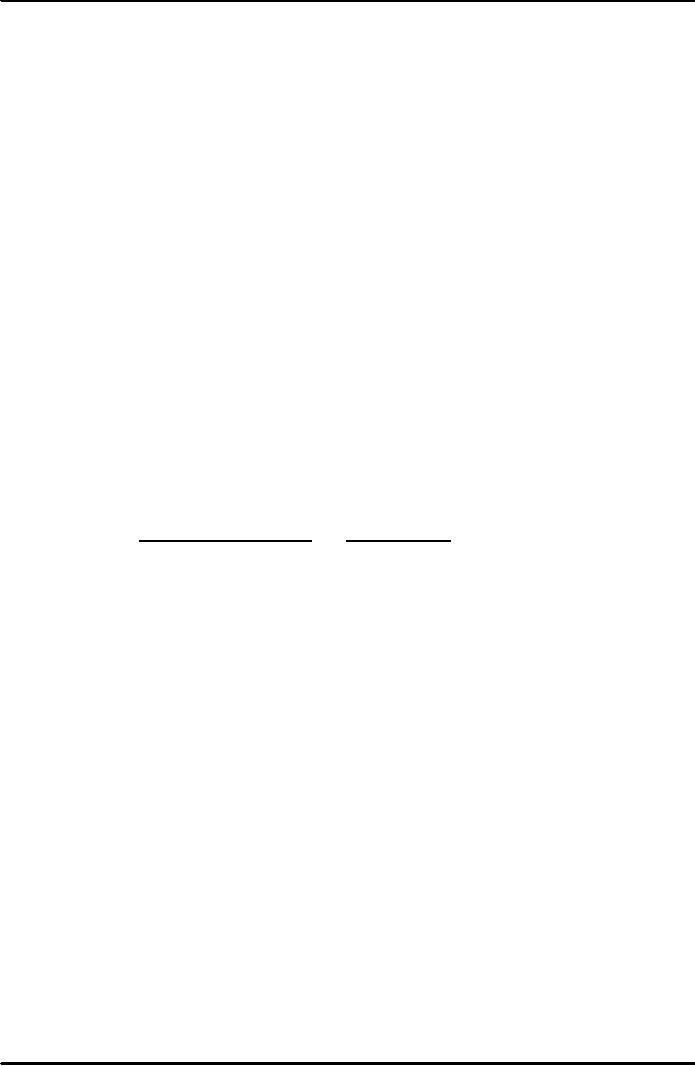 |
ADVERTISING ETHICS:Basic Principles, Evidence, Remedies, Puffery |
| << ADVERTISING ETHICS:The Benefits of Advertising, The harm done by advertising |
| ADVERTISING IN TODAY’S SOCIETY:Psychological tricks >> |

Business
Ethics MGT610
VU
LESSON
39
The Federal
Trade Commission (FTC) is
the primary regulator of
deceptive advertising in
the
U.S. It was
created by the FTC Act in
1914.
Section
5 of the Act gave the
Commission the authority to
regulate "unfair methods
of
competition."
The Act was later changed, by
the Wheeler-Lea Amendment, to
give the FTC
authority
over both "unfair methods of
competition" and "unfair or deceptive
acts or practices."
It
is through this latter power
that the FTC regulates
deceptive advertising.
Commissioners
of the FTC act like judges,
hearing cases when marketers
are charged with
violating
the FTC Act. The
Commission also publishes advertising
guidelines for
marketers,
which
are not
law
but merely advisory, and
adopts trade regulation rules,
which are
law.
Basic
Principles
According
to its 1993 Policy Statement on
Deception, the FTC considers a
marketing effort to
be
deceptive if: (1) there is a
representation, omission, act or
practice, that (2) is likely
to
mislead
consumers acting reasonably
under the circumstances, and
(3) that
representation,
omission,
or practice is "material." The
term "material" refers to
the fact that some
deceptive
claims
are trivial, and that the
FTC will only regulate deceptions
that are important to
consumers,
i.e., those that affect
consumers' "choice of, or
conduct regarding, a
product."
Evidence
To
prove that an ad claim is,
in fact, deceptive, the FTC
is not generally concerned
with what
the
claim says, but what it
conveys to consumers. If that
conveyed message differs
from the
reality
of the product attribute
being advertised, the claim
is considered deceptive. This
requires
the
Commission to look at two
types of evidence: (1)
evidence concerning what
message is
conveyed
to consumers, and (2) evidence
concerning the product
attribute's true
qualities.
The
former requires looking into
the heads of consumers. The
FTC considers surveys the
best
form
of evidence to discover what
message is conveyed by an ad,
though sometimes the
Commission
relies on other evidence.
The question of how best to
unearth the inner thoughts
of
consumers
has been an issue of
significant research efforts and
theoretical discussion.
The
second
form of evidence can require a
variety of different methods of
assessing a product's
attributes.
If, for example, the claim
refers to the fuel mileage
of an automobile, laboratory
testing
of the vehicle's fuel
efficiency would normally be
required. However, the FTC
requires
that
advertisers conduct such testing
prior
to making
the ad claim. If a claim is
made without
evidence
in hand that the product
will perform as advertised, the
claim will be considered
deceptive.
This is known as "substantiation," and
the Commission's requirements
are detailed in
the
1984 FTC Substantiation
Policy..
Remedies
Most
cases started by the FTC
never require the Commission
to make a final decision about
the
deceptiveness
of an advertiser's claim. Those
cases end, instead, in a "consent
order," whereby
the
advertiser simply agrees to do
what the FTC staff
asks. No hearing is
required.
96

Business
Ethics MGT610
VU
In
those cases that do end in a final
FTC decision, if the claim
is found deceptive, the
advertiser
will
face one of three possible remedies: (1) a
Cease and Desist Order, which
requires the
advertiser
to stop making the claim,
(2) an Affirmative Disclosure
Order, which forces
the
advertiser
to provide consumers with
more information, or (3)
Corrective Advertising, which
is
a
form of affirmative disclosure
that is intended to correct
lingering deception that
results from
a
long history of deceiving
the consumer.
Puffery
Historically,
claims that were "mere
exaggerations" or "hyperbole" were
considered to be
puffery,
and therefore not deceptive.
Terms like "the best" or
"the greatest" were sales
talk, and
the
FTC would not regulate
them. After all, everyone
knows that "Wonder Bread" is
not really
a
wonder, and "The Greatest Show on
Earth" is not what everyone
considers the greatest.
Puffery,
therefore, was a form of opinion
statement, and considered
un-regulable.
Some
observers have expressed concern
that the "puffery defense" was a
loophole through
which
many deceptive claims fell.
The Commission has been
criticized for allowing
deceptive
claims
to slip through under the
guise of puffery.
On
the other hand, the
FTC has defined puffery as
claims that (1) reasonable
people do not
believe
to be true product qualities, and
(2) are incapable of being
proved either true or
false.
Consequently,
if deception is the creation of a
"false belief" about the
product in the mind of
a
consumer,
claims that fall into
the FTC definition of
puffery cannot be deceptive. By
definition,
such
claims can be neither false
nor can they create belief.
This means that if deceptive
claims
have
slipped through regulation as
puffs, it is because the FTC
has failed to follow its
own
definition.
See our bibliography on
puffery and puffery quotes.
97
Table of Contents:
- INTRODUCTION:Business Issues
- INTRODUCTION (CONTD.)
- THEORY OF ETHICAL RELATIVISM
- MORAL DEVELOPMENTS AND MORAL REASONING
- MORAL REASONING:Arguments For and Against Business Ethics
- MORAL RESPONSIBILITY AND BLAME
- UTILITARIANISM:Utilitarianism: Weighing Social Costs and Benefits
- UTILITARIANISM (CONTD.):rule utilitarianism, Rights and Duties
- UNIVERSALIZABILITY & REVERSIBILITY:Justice and Fairness
- EGALITARIANS’ VIEW
- JOHN RAWLS' THEORY OF JUSTICE:The Ethics of Care
- THE ETHICS OF CARE:Integrating Utility, Rights, Justice, and Caring
- THE ETHICS OF CARE (CONTD.):Morality in International Contexts
- MORALITY IN INTERNATIONAL CONTEXTS:Free Markets and Rights: John Locke
- FREE MARKET & PLANNED ECONOMY:FREE TRADE THEORIES
- LAW OF NATURE:Theory of Absolute Advantage, Comparative Advantage
- FREE MARKETS AND UTILITY: ADAM SMITH:Free Trade and Utility: David Ricardo
- RICARDO & GLOBALIZATION:Ricardo’s Assumptions, Conclusion
- FREE MARKET ECONOMY:Mixed Economy, Bottom Line for Business
- COMPETITION AND THE MARKET:Perfect Competition
- PERFECT COMPETITION
- MONOPOLY COMPETITION:Oligopolistic Competition
- OLIGOPOLISTIC COMPETITION:Crowded and Mature Market
- OLIGOPOLIES AND PUBLIC POLICY:Ethic & Environment, Ozone depletion
- WORLDWATCH FIGURES:Population Year, Agriculture, Food and Land Use
- FORESTS AND BIODIVERSITY:The Ethics of Pollution Control
- THE ETHICS OF POLLUTION CONTROL:Toxic Chemicals in Teflon
- THE ETHICS OF POLLUTION CONTROL
- THE ETHICS OF POLLUTION CONTROL:Recommendations to Managers
- COST AND BENEFITS:Basis of social audit, Objectives of social audit
- COST AND BENEFITS:The Ethics of Conserving Depletable Resources
- COST AND BENEFITS:The Club of Rome
- THE ETHICS OF CONSUMER PRODUCTION AND MARKETING:DSA Comments
- THE ETHICS OF CONSUMER PRODUCTION AND MARKETING:Should Consumers Bear More Responsibility?
- THE CONTRACT VIEW OF BUSINESS' DUTIES TO CONSUMERS
- THE CONTRACT VIEW OF BUSINESS' DUTIES TO CONSUMERS:The Due Care Theory
- THE SOCIAL COSTS VIEW OF THE MANUFACTURER’S DUTIES
- ADVERTISING ETHICS:The Benefits of Advertising, The harm done by advertising
- ADVERTISING ETHICS:Basic Principles, Evidence, Remedies, Puffery
- ADVERTISING IN TODAY’S SOCIETY:Psychological tricks
- ADVERTISING IN TODAY’S SOCIETY:Criticism of Galbraith's Work
- ADVERTISING IN TODAY’S SOCIETY:Medal of Freedom
- ADVERTISING IN TODAY’S SOCIETY:GENERAL RULES, Substantiation
- ADVERTISING IN TODAY’S SOCIETY:Consumer Privacy, Accuracy
- THE ETHICS OF JOB DISCRIMINATION:Job Discrimination: Its Nature